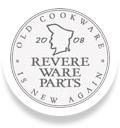We found ourselves laughing at this obvious mismatch between product and picture.

We found ourselves laughing at this obvious mismatch between product and picture.

It amazes us how many of our new parts make it on to eBay for resale, complete with all of our stock pictures and our product description verbatim from our website. Since we don’t sell wholesale to others, we assume these are just parts that people have purchased and decided they no longer needed. This must mean we are in the mainstream now.
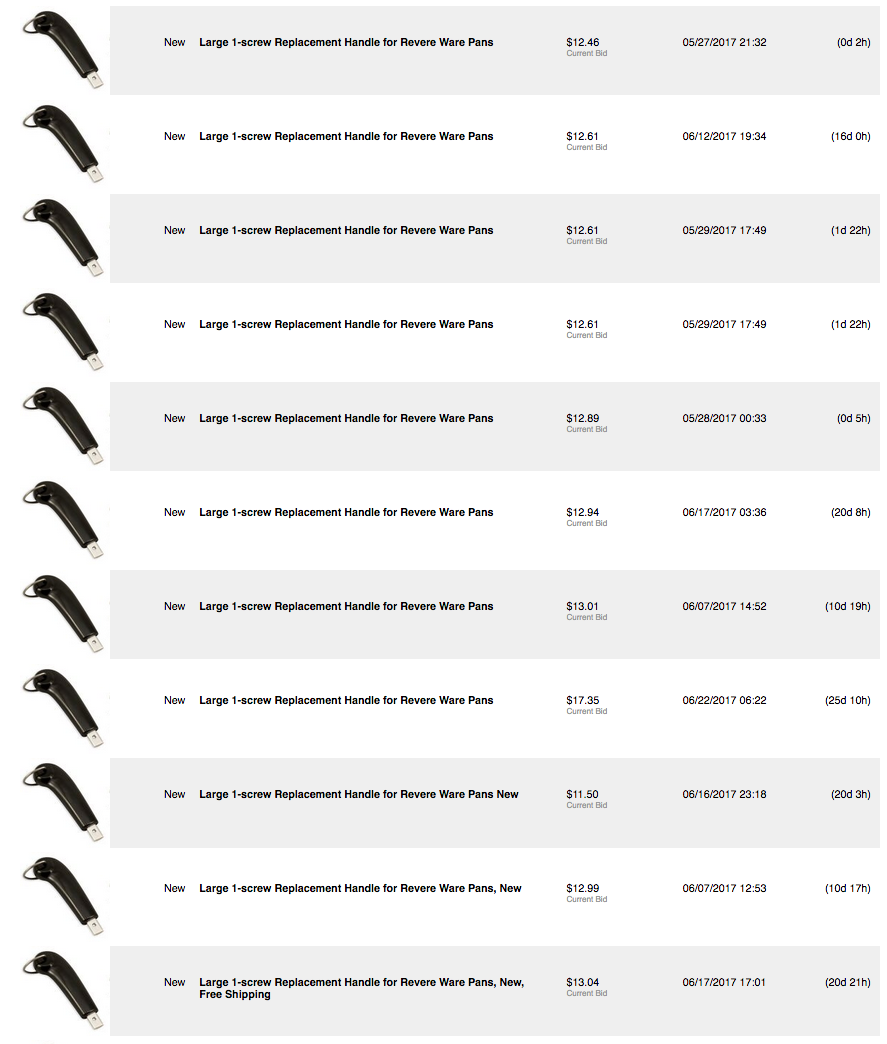
We’ve seen colored Bakelite parts before, but this is the first time we’ve seen white and green lid knobs.
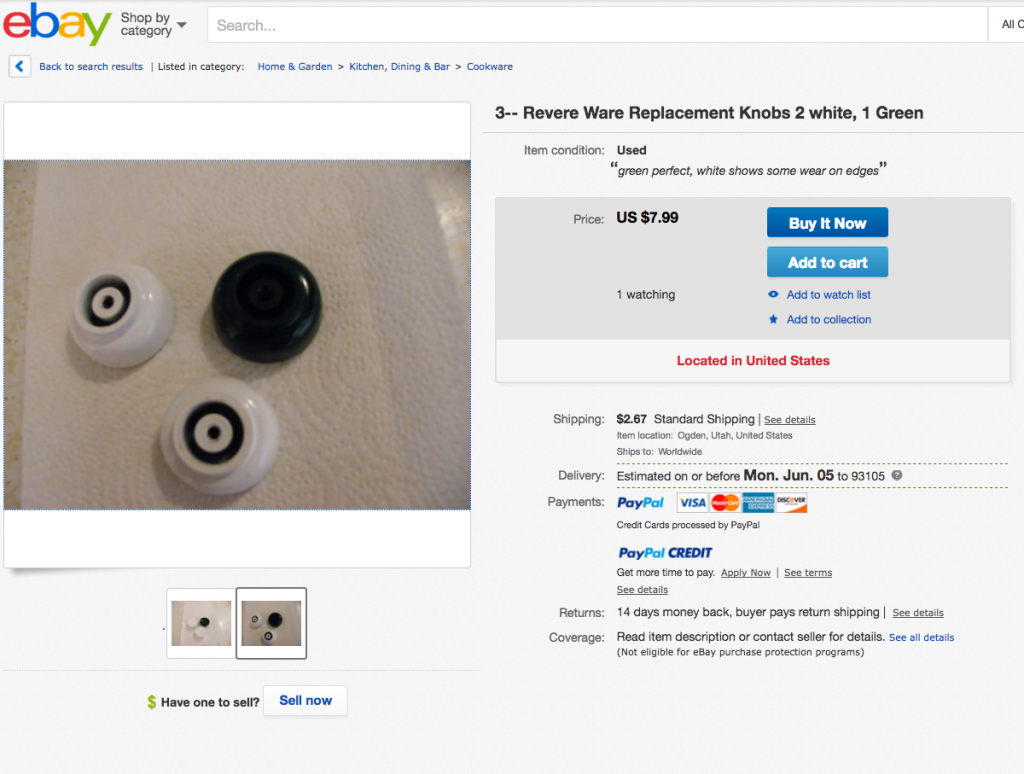

Here is a graph of our sales for every year since we started.

This cyclical pattern appears in almost every way we measure our business.
In retail sales, this is exactly what one would call a seasonal sales cycle. From peak (December-January) to trough (June-July) is about double the sales.
With respect to our little part of the retail world, I’ve often wondered why people are twice as interested in Revere Ware related items around the holidays then during the summer and fall.
I have no idea what percentage of our replacement parts are purchased as gifts, vs people buying them for themselves.
In any event, it is in interesting factoid around our business we thought we would share.
We reached a milestone yesterday, order number 20,000.

Since we started selling Revere Ware replacement parts, our business has shifted more and more to Amazon.com. While we still sell a fair amount through our own website, about 2/3 of our business now comes from selling our projects on Amazon.com.
In all, through both channels (and a brief stint selling on eBay), we’ve fulfilled about 40,000 orders since we started selling back in 2009. This may not sound like a lot relative to the e-commerce success stories you can read about in the news almost any day. But for us, we like to think about having made 40,000 people able to continue to use their often decades old cookware, and that makes us happy. After all, we started this business because we were looking for Revere Ware replacement parts and couldn’t find them.
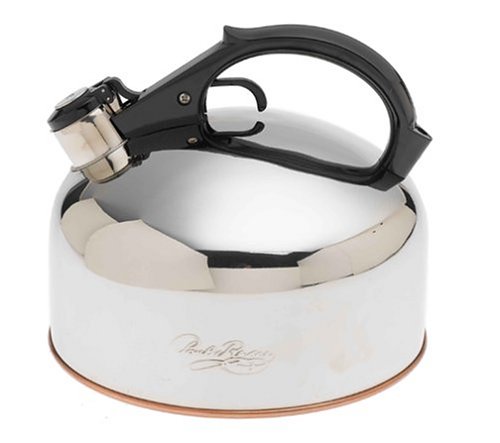
Customer Carol asks:
I have been using a Paul Revere tea kettle every day for over 25 years. Is it still safe to use or does the inside corrode?

Just a reminder to our customers or potential customers that we do our best to provide good customer service.
If a product arrives damaged, we will replace it.
If a shipment fails to arrive, we will ask that you work with the Postal Service to locate it, and it that doesn’t work, we will replace it.
If a part fails and you weren’t abusing it, we will replace it.
If you are having an issue installing or using one of our parts, we will do our best to help you, and if that doesn’t work, we will take it back for a refund.
If you have a question, even one that isn’t related to one of our parts or won’t result in a sale, we will do our best to answer it. However, we do shy away from giving marital advice.
The only thing we ask is that you give us a chance to solve your problem before giving up (and leaving us negative feedback), and that you are kind in your communications.
I wish more people who purchase products online would expect good customer service (and hold businesses accountable when they don’t provide it). If everyone did that, businesses that didn’t provide good customer service would not survive.
Customer Rachelle contacted us with a question about the meaning of a B stamp in the middle underside of a couple of her lids.


These are lids that otherwise look exactly like the standard lids for the typical copper bottom cookware.
Does anyone know what the “B” stamp means?
We’ve ranted before about the effect of negative feedback. In the last few days we’ve seen some perfect examples of undeserved negative feedback affecting our Amazon seller rating substantially.
Here is an example of someone giving us the feedback that should have been left for another purchase.

In this next example, the customer was confused and thought 1 was the best possible feedback. Thankfully, they retracted the feedback when we brought this to their attention.

These two reviews dropped us from 100% positive feedback for the last 30 days to 87%.
Unlike eBay, in which feedback is very frequently mutual, Amazon customers have very little motivation to leave positive feedback when they have a good experience. That means that negative feedback has an oversized effect. When see the feedback rating of an Amazon merchant, it will look something like this:

With the eBay feedback system, I expect that about the same percentage of happy customers leave positive feedback as unhappy ones leave negative feedback. So, if I see a 92% feedback rating, I assume that there are a heck of a lot of unhappy customers and I tend to avoid sellers with ratings like that. Even a 98% rating can indicate a history of issues with buyers.
But with Amazon.com, probably 10 or 100 times fewer satisfied customers will leave feedback than unhappy ones. Let’s make some assumptions and see what a real feedback score would be like if everyone left a review reflecting their experience. For example, let’s assume that 1/2 of all customers with a bad experience leave a negative review. We had 14 neutral or negative reviews in the last year, out of 3768 purchases.
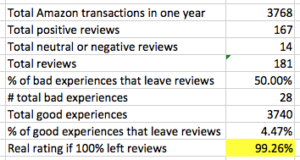
That assumption gives is 28 bad experiences out of almost 4,000 customers, or a real feedback rating of 99.26% (compared to our 92% rating as shown above). Put another way, you would have a one in 135 chance of having a bad experience.
But that’s not the end of the story. Almost no-one that leaves us negative feedback contacted us first to see if we could resolve their issue. We are very helpful (if we do say so ourselves) and are always willing to solve a problem that is our fault, and usually solve issues that aren’t our fault as well.
That means, with us, you have almost no chance of having a bad experience. I’ll bet a lot of other Amazon merchants are also very willing to work with their customers and have similar frustrations with the Amazon feedback system.
That reminds me, I am way behind on leaving feedback on my eBay purchases. I’d better get to it.
Update 3/27/18
I couldn’t help but add a couple of recent feedback ratings we got on Amazon.com.
![]()

That last one just kills me. It makes you wonder, exactly what does it take to get 5 stars in this day and age?
Arrived promptly, was as described, was well packaged, was hand delivered by the seller, at no cost, very satisfied.
We often get queries for replacement parts not in our catalog. Unfortunately, it isn’t economical for us to supply every type of part regardless of the amount of demand out there for it. One option, is to search eBay for new old stock replacement parts.
When that doesn’t work, it isn’t necessarily the end. Given that there is a very rich marketplace on eBay for Revere Ware cookware, you can very likely find the same piece you are looking for a part for, that is complete, and use it as a donor for the parts you need.
One example of a part that is critical and can no longer be purchased anywhere is the over pressure plug for the vintage pressure cooker.

While this may look like a simple screw, it is not. IT has a hole in the center filled with solder that will blow out at high pressure. Once the over pressure plug has been blown out, it must be replaced.
eBay typically has quite a few listings for the vintage pressure cooker. For example, here is one for $30 shipped.

If you are attached to your vintage piece (as many of us are) this probably isn’t too much to pay to get your pressure cooker functional again, and you’ll get some other extra parts to boot.
So, the next time you can’t find a replacement part, consider buying a used piece as a parts donor.
